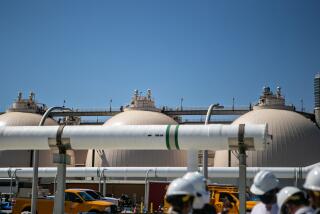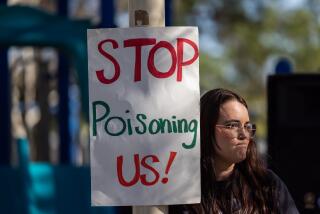New odor control system should bring relief to Laguna Beach neighborhood by summer, city officials say
The Laguna Beach City Council has approved purchasing a new odor control system aimed at reducing the stench emanating from a sewer lift station in a south end neighborhood by summertime, officials said.
Construction of the roughly $250,000 biological odor control system is expected to begin at the Bluebird South Orange County Wastewater Authority lift station at the corner of Glenneyre and Calliope streets in February, said David Shissler, Laguna Beach’s director of water quality. Residents of the nearby Victoria Beach neighborhood have long complained about foul odors emanating from the station.
The new system will cleanse the air emitted from the lift station’s wet well and manholes in the streets. The rotten egg smell “is caused by decaying organic material in the raw wastewater that releases odorous compounds, such as hydrogen sulfide,” according to a city report.
“It’s amazing how well it works,” Shissler said of the new odor control system. “You really don’t smell anything.”
Early last year, the city installed the same system at the sewer lift station near the farmers market — across from the Laguna Playhouse on Broadway Street.
Councilwoman Toni Iseman said before the system was installed, she would often call the city manager to complain about the smell.
“You used to go to the farmers market and you’d avoid a certain area,” she said during a recent council meeting. “That technology was amazing — I didn’t know it could be fixed. And so I’m confident if the same technology is going [in the Bluebird lift station], we won’t have a problem.”
The odor control system uses vacuum suction to draw the smelly gases from the lift station’s wastewater holding tank and from underground piping around the area, Shissler said. The odor control system then carries the gases through a series of shelves, where bugs feed on the gas.
“By the time it gets to the end of that maze … all of that sulfite gas has been eaten by those bugs,” he said.
The last step of the system is “polishing,” where the air cleaned from the bugs then goes through a carbon filter to catch any remaining gas.
The project for the station was approved in November 2017. The council voted unanimously earlier this month to allow the water department to purchase the equipment directly so that construction and installation can begin quickly, Shissler said.
With the first odor control system as a guide, Shissler said the stink around the station near Victoria Beach should be gone about three months after the system is installed.
“In fairness to the people living around the lift station, we really are trying to take advantage of what we were able to do at the [first] station and have it work at this station and really try and reduce those odors,” City Manager John Pietig said at the council meeting.
But some residents living down South Coast Highway near Victoria Beach wish the city would do more to address sewage smell problems in other neighborhoods.
Dan Sugg, who lives near the corner of McAulay Place and Coast Highway, said he often catches a whiff of “rotten eggs” when he steps outside in the morning to pick up his newspaper. Like several of his neighbors, he said the smell is worse early in the morning, around 6, and dissipates within a couple of hours.
Marsha Bianchi lives across McAulay from the Suggs. She has contacted the city several times over the years about the stench that she said “smells like sewage with a chemical overtone.”
“One time this summer it was so bad it actually woke me up,” Bianchi said. “I was dreaming about something disgusting, and I woke up, and it was the sewer smell. It’s unacceptable. These are really expensive homes, so we shouldn’t have to deal with this.”
Shissler said the problem is not related to either of Victoria Beach’s two small lift stations, but with the transmission main that runs nearly six miles down the center of Coast Highway, connecting the lift station near Victoria Beach to the coastal treatment plant in Aliso Canyon.
Two million gallons of wastewater run through the pipeline’s 27-inch diameter every day, he said. At night, the flow slows to a near standstill, and the water becomes stagnant.
“The odors start to build. In the morning, when everyone starts taking their showers and using dishwashers, you get a huge rush of water that has been sitting all night,” he said. “And you get this big slug of stinky water that’s coming through the system.”
The gaseous smells around Victoria Beach rise from a pipe vault near the McAulay Place and South Coast Highway intersection that lets air out from the underground system, Shissler said.
The water quality team has installed two systems there that are intended to prevent the smells — a super oxygenation system to help regulate the flow during the day and a magnesium hydroxide system to settle the gas at night. As with the biological odor control system, there are also carbon filters placed near manhole covers to stop the gas from releasing aboveground.
“We’re doing as much as can be done with current technologies,” Shissler said.
Pinho writes for Times Community News
More to Read
Start your day right
Sign up for Essential California for news, features and recommendations from the L.A. Times and beyond in your inbox six days a week.
You may occasionally receive promotional content from the Los Angeles Times.







